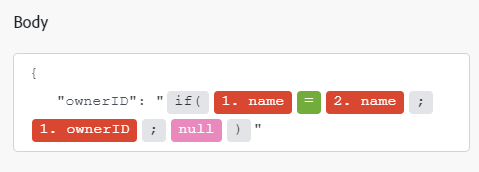Microsoft Office 365 Calendar
In an Adobe Workfront Fusion scenario, you can automate workflows that use Microsoft Office 365 Calendar, as well as connect it to multiple third-party applications and services.
Access requirements
| table 0-row-2 1-row-2 2-row-2 3-row-2 layout-auto html-authored no-header | |
|---|---|
| Adobe Workfront package |
Any Adobe Workfront Workflow package and any Adobe Workfront Automation and Integration package Workfront Ultimate Workfront Prime and Select packages, with an additional purchase of Workfront Fusion. |
| Adobe Workfront licenses |
Standard Work or higher |
| Adobe Workfront Fusion license |
Operation-based: No Workfront Fusion license requirement Connector-based (legacy): Workfront Fusion for Work Automation and Integration |
| Product | If your organization has a Select or Prime Workfront package that does not include Workfront Automation and Integration, your organization must purchase Adobe Workfront Fusion. |
For more detail about the information in this table, see Access requirements in documentation.
For information on Adobe Workfront Fusion licenses, see Adobe Workfront Fusion licenses.
Prerequisites
To use Microsoft Office 365 Calendar modules, you must have a Microsoft Office 365 Calendar account.
Microsoft Office 365 Calendar API information
The Microsoft Office 365 Calendar connector uses the following:
Connecting the Office 365 Calendar service to Workfront Fusion
For instructions about connecting your Office 365 Calendar account to Workfront Fusion, see Create a connection to Adobe Workfront Fusion - Basic instructions
Microsoft Office 365 Calendar modules and their fields
When you configure Microsoft Office 365 Calendar modules, Workfront Fusion displays the fields listed below. Along with these, additional Microsoft Office 365 Calendar fields might display, depending on factors such as your access level in the app or service. A bolded title in a module indicates a required field.
If you see the map button above a field or function, you can use it to set variables and functions for that field. For more information, see Map information from one module to another.

Event
Create an Event
This action module creates a new event.
Delete an Event
This action module deletes an existing event.
Get an Event
This action module retrieves details of the specified event.
Search Events
This search module retreves details of an event when the event is created, updated, deleted, started, or ended in the selected calendar.
Update an Event
This action module updates an existing event.
Watch Events
This trigger module retrieves details of an event when the event is created, updated, deleted, started, or ended in the selected calendar.
Calendar
Create a Calendar
This action module creates a new calendar in your Office 365 account.
Delete a Calendar
This action module deletes an existing calendar.
Get a Calendar
This action module retrieves details about a single calendar.
List Calendars
This search module retrieves a list of all of the authenticated user’s calendars.
Update a Calendar
This action module edits an existing calendar.
Other
Make an API Call
This module allows you to perform a custom API call.
Select the HTTP request method you need to configure the API call. For more information, see HTTP request methods.
